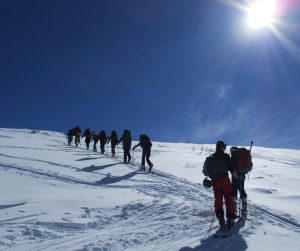Scholar In Residence: Immigration
How often do you consider the possibility that your firmly held beliefs could, in fact, be wrong?
Language Department Chair Dan Pittz was initially opposed to a school screening of the recent documentary, 4.1 Miles. As was history teacher, A.O. Forbes. “We’re going to kill them,” he thought. “I remember coming out of it, thinking, ‘What’ve we just done?’” Upon viewing 4.1 with the student body, Director of Development Lisa Raleigh felt otherwise. “Thank you for showing that,” she reassured them.
“You could keep kids in a bubble,” Pittz allows. “But I’ve been very frustrated by the bubble. What I mean by that, is it’s our defense not to be informed, to not be educated about something.” That is in part what the Visiting Scholar Program seeks to address. “It’s meant to inject some interest— intellectual, emotional, civic energy— into CRMS,” says Forbes.
So when CRMS history teacher Mark Clark pitched Visiting Scholar to the Language Department, Pittz agreed, deciding to focus on immigration. “It’s such a timely issue, I just felt like we had to do it,” says Pittz.
To spark dialog, students viewed Daphne Matziraki’s harrowing 4.1 Miles. During the horrifically real twenty-one minutes of the film, every comfort and safety we have in our secure Carbondale bubble comes into question. To say it was eye-opening for students is an understatement.
“There’s this tender line,” says Forbes, “this resistance; and if you just crush [these students] with something that’s so wholly devastating—
“—Overwhelming—” Pittz interjects.
“—I think you expose people,” continues Forbes, “but you have to give them a way out…give them something to do. Doing something alleviates it. You gotta show things like 4.1 Miles, but you have to come up with something that people can do—CRMS students are, theoretically, the movers and shakers— they have the wherewithal to do something.”
“I had many students come up to me, asking me “Why?” says Pittz. “Why are we looking at this? We’re not personally affected by it. We all think the same thing.” There was, I thought, a real ignorance around it.” He is by no means criticising his students. “You start to ask more pointed questions, and they start to realize—maybe they’re not all thinking the same.”
• • •
In a change from years past, this year’s Scholar programming includes multiple speakers through the school year.
The first scholar presentation in November was given by a husband-wife team, “who were tasked with the impossible,” Pittz chuckles, “to present the entire landscape of immigration in an hour!” Jennifer Smith is a Glenwood Springs immigration attorney representing immigration activist Sandra Lopez. In the news headlines of late, Lopez has taken sanctuary against deportation with Two Rivers Unitarian church in Carbondale. Husband David Smith runs the pre-collegiate program through the local school district, helping first-generation immigrant students to become the first in their families to secure college educations.
“They started with a bit of history,” Pittz says.” They talked about the legal changes that happened in the last 200 years since immigration policy began, and how it’s been racism from the beginning—kicking out the Chinese, for example—and how it’s changed. It’s become more family oriented, or economically oriented, things like that.”
“In 9th-grade geography, we have always talked about the nature of how we make decisions- who gets to come in, and should they and why? ” adds Forbes. “Sandra is part this current issue. What’s the evolution of the conditions that put her in the church, waiting to be pardoned, or to be deported?”
“At this point [in the school year],” says Pittz, “we’re not diving into the real messiness of bias and prejudice because that’s going to be a real can of worms when we open it. But we’re addressing the education piece of it. That has allowed us to reach a higher level of information than we had in the past. [The Smiths’ presentation] hit those goals. We had great conversations with students afterward.”
The conversations continue through class. “There are weekly topics on immigration in Spanish class,” Pittz explains. “Two students are given a question. They do some research and bring it to the class. We’ve had ongoing discussions all year. We’ve started to flesh it out with even better questions. Should cities be punished for acting as sanctuaries? Should immigrants who come here as children be allowed to stay?” Lopez’s situation resurfaces throughout.
“We started out with more general questions: Is illegal immigration good for the economy? Should we be settling more refugees? And what is a refugee even, compared to an immigrant? As they start to realize how little they know— myself included— it’s amazing. And we haven’t even gotten to The Wall! Is the wall going to work? Is it even economically feasible? Have any walls in history ever worked? Can we compare walls?” Pittz asks.
“The topic of immigration has so many facets. I had always thought comprehensive immigration reform was the only way to go about solving all these issues— and that’s exactly why none have been solved,” he says. “In some ways, it’s too big.”
What can people do? How could students watching 4.1 Miles act upon what they witnessed and felt?
The CRMS Active Program has a new service crew in conjunction with immigration studies. Five students, with two to three more in January, tutor on Thursday evenings through English in Action. In discussing this immigration crew, the diversity of the students themselves became evident: a young girl who never learned to speak the Spanish language in which she was raised; a Muslim; an adopted Cambodian; a Jew; and an Aspenite.
Sitting with Pittz and Forbes over a lunch table, even our conversation traverses the awkward terrain of perceived or implied prejudice. Labels arise frequently- ethnicity, color, gender- as we explore aspects of the immigration/ migrant/ refugee spectrum. “This discomfort is a part of the growing pains associated with all of these conversations societies need to have— and are having,” acknowledges Forbes. “With this crew, we’re trying to get a heftier connection to action around social justice.”
4.1 Miles’s Matziraki challenges us, “How do we act as citizens of this world when other human beings need us? I want to question our treatment of refugees and people who seek asylum and our help.”
Which brings us to January’s Visiting Scholar, CRMS’s own Kelsey Freeman, Class of 2012. Listening to Forbes and Pittz reminisce, it’s clear that Freeman is an exceptional human being. She has accomplished more for humanity in the five years since she completed CRMS than many do in a lifetime. “To watch her through those formative years— and then go off and do those things she is doing?!” Pittz exclaims. “Kelsey does it 100 percent from the heart. She is so driven by goodness.”
“Her 9th-grade year-end spoken exam, which is like a Ted Talk, was so impressive,” recalls Forbes, “I took her to Aspen Socrates Fest. People were blown away. Not only does she have heart, and intelligence, she has the integrity to do all the work to tie it together. She sees the connections. I can’t wait for our kids to see her and comprehend what is possible.”
Freeman is on fire. Her pursuits encompass immigration policy, indigenous rights, social justice, and public policy. Her work focuses on the effects that policies have on specific communities, an area she has explored through research, teaching, and non-profit work with multiple indigenous cultures throughout North, South and Central America—in just the last five years! Most recently, Freeman earned a Fulbright Scholarship to teach English and study migration in central Mexico. While working at a local migrant shelter, she collected the stories of over fifty migrants for a book she is close to finishing. It interweaves migrant stories with anecdotes from her own experiences in central Mexico to explore broader political tensions relating to migration. She currently lives in Bend, Oregon, where she works as an educator for a social service non-profit. Like a true Oyster, she fills her free time tele skiing, kayaking, and being outdoors.
Freeman’s Visiting Scholar presentation is Tuesday, January 9, 2018, at 7:00 PM in The Barn. Joining her, special bonus, is sister Tess Freeman, CRMS ‘09, a freelance photographer and videographer, also based in Bend, who shot images for Kelsey. It stands to be an inspiring and provocative evening. This presentation is free and open to the public.
 MYCRMS
MYCRMS





 Virtual Tour
Virtual Tour

